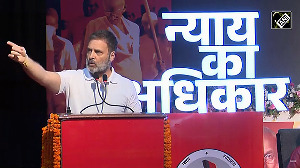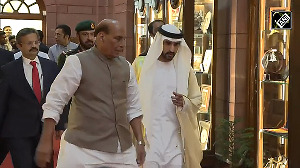Taxi-hailing apps often disappoint with long waiting time, cancellations and price increase in some cases during peak hours.
 Bhavish Aggarwal-led Ola (earlier Ola Cabs) is working on a service that may significantly reduce waiting time of its users.
Bhavish Aggarwal-led Ola (earlier Ola Cabs) is working on a service that may significantly reduce waiting time of its users.
"The company is building an on-demand service, where the customer will not have to wait at any point in time to get a transportation of his/her choice," Anand Subramanian, senior director, marketing communications at Ola, told Business Standard in an interaction.
He said, currently the average ETA (expected time of arrival) for Ola vehicles is five minutes.
At present, taxi-hailing apps, cutting across companies, often disappoint with long waiting time, cancellations and price increase in some cases during peak hours.
While the demand for app-based cabs has risen, supply hasn't matched up. A comparison between Mumbai and New York may perhaps show the demand-supply gap.
"New York has three times the number of taxis with one-fourth the population," said an industry source.
Giving an indication of the demand, Subramanian said, "We are at a million booking requests a day currently. That's set to grow to three million a day by April 2016."
Booking requests have grown 30 times in the past year. But, so far, 150 million bookings have been served on the Ola platform (in four and a half years), implying that there have been rapid cancellations as well.
The largest app-based taxi aggregator, with an estimated 80 per cent market share in the combined cab and autorickshaw space, has rivals such as Meru and Uber.
On whether Ola would invest as much as what Uber has committed ($1 billion or Rs 6,500 crore) this year in the India market, Subramanian said, "This market needs considerable investment since India is underserved on mobility."
The company is investing the money raised towards building more supply and skilled resources and building additional use cases like Ola Share, and Ola Prime for better utilisation of available supply, he added.
"We have raised $1.3 billion (Rs 8,450 crore) so far this year and $1.2 billion (Rs 7,800 crore) in the past year."
In fact, Ola's latest round of funding of $500 million (Rs 3,250 crore) came from a clutch of existing investors, including SoftBank, Tiger Global and DST Global, along with new ones such as British asset management firm Baille Gifford, Falcon Edge Capital and Chinese taxi hailing app Didi Kuaidi (which is fighting Uber in China).
At an estimated valuation of over $5 billion (Rs 32,500 crore), Ola caters to 102 cities, with 350,000 vehicles.
The number of vehicles is growing by 1,200 to 1,500 a day on the company's platform. Uber has around 250,000 drivers and operates in 22 cities.
Profitability is also not the company's focus right now, growth is.
"Profitability is a matter of choice. But right now, the focus is on growth and investments," Subramanian said. In 2013-14, Ola reported losses of Rs 34.2 crore on revenue of Rs 51 crore, according to filings with the registrar of companies. The company, with a workforce of around 7,000, is looking to hire the best talent and grow its business.











 © 2025
© 2025